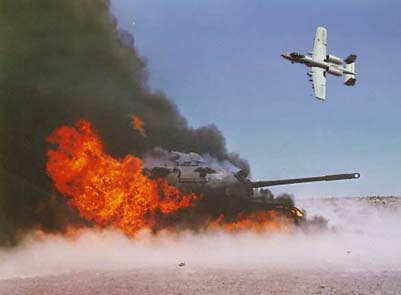If our nation goes over a financial Niagara, we won't have much strength and, eventually, we won't have peace. We are currently borrowing the entire defense budget from foreign investors. Within a few years, we will be spending more on interest payments than on national security. That is not, as our military friends say, a 'robust strategy.'
Maxim 11:
Everything is air-droppable at least once.
The Seventy Maxims of Maximally Effective Mercenaries”
Howard Tayler“Maxim 36:
When the going gets tough, the tough call for close air support.
The Seventy Maxims of Maximally Effective Mercenaries”
Howard Tayler
.jpg)
The Air Force’s F-22 is being flown in combat for the first time. Specifically, it is being used against ISIS in Syria. It’s considered ideal for the task because is is stealthy—and Syria has some highly capable anti-aircraft missile defenses. These belong to the Assad regime, not ISIS.
The F-22 has been declared combat ready since 2005—so why wasn’t it used in either Iraq or Afghanistan? Or is too expensive to lose?
The Air Force paid nearly $70 billion for 187-F-22s—which works out at $370 million each, or roughly twice the price of an F-35 (depending in which model and whether you believe the F-35 figures). The F-22 figure reflects the development costs as well. The Air Force likes to forget about these and quote flyaway cost (the marginal cost of one extra aircraft).
Amazingly, given that truly astounding cost, the F-22 was designed solely to achieve air superiority. It was only in the early Nineties that the decision was taken to add bomb-dropping capabilities.
By all accounts the F-22 is a magnificent aircraft, but one has to wonder whether it makes sense to buy aircraft at this cost. You could, for instance, buy seven Grippen state of the art fighters for the same money. Yes, I did say SEVEN—and the Grippen is a very serious machine.


Actually the ideal aircraft to use to degrade ISIS is the A10 Warthog which was designed specifically for this kinds of work—and which we already own. However, the Air Force is trying to get rid of it in favor of the technically challenged and vastly expensive F-35.
The U.S. military have a habit of not using a perfectly good weapons system they own because they want to justify something new and shinier. Accordingly they moan about the old weapons system, starve it of maintenance funds and so on (and then complain about it’s unreliability) instead of fixing the problems and up-grading the thing.
The Army did this with the tracked M-113 because they wanted the wheeled Stryker even though an upgraded M-113—the version known as an MTVL—would have not only been much cheaper, but would have delivered superior off-road performance. And do we ended up with the Stryker, at huge cost despite the fact that its off-road performance sucks.
The Air Force is doing much the same thing with the A-10 in order to justify the F-35.
I’m all for a militarily strong U.S. but there is a profound difference between strength and extravagance.
No comments:
Post a Comment